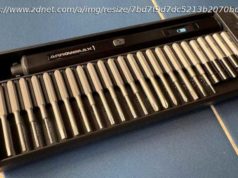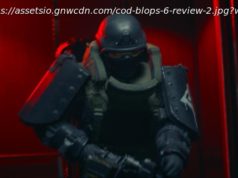Some things that worked in my favour when I showed my game Switch ‘N’ Shoot at a public event.
Showing your game off at public events is an important part of raising awareness among your target audience. But it’s hard work, and there are many things that can work against you, not just in the way you present your game but also in the design of the game itself.
With some foresight, you can steer the design of your game to maximise the impression you make at public events and make the difficult job of presenting it a little easier.
Last weekend, I showcased my indie game Switch ‘N’ Shoot at Norwich Gaming Festival 2018 and I was very happy with how smoothly it went. So I decided to share some of the things that I felt worked in my favour in the hope that it will be useful to you, fellow developers, when you present your own games.
Switch ‘N’ Shoot, a shoot ’em up with just 1 button
What this blog post is: a list of things that worked in my favour.
What this blog post is not: a list of things that will definitely work for your game, or a list of things that you must do to be successful.
Please remember to take this with a pinch of salt. Every game is different. What worked for me (a solo developer) and my small indie game may not work for you, but hopefully there are some useful takeaways here that you can learn from and apply to your own needs.
First, a little bit of context for Switch ‘N’ Shoot:
It’s a one-button arcade shoot ’em up. Every time to shoot you also change direction, and you move constantly to the left or right.
It’s a simple, endless score attack game with 1 point award for every alien you shoot. You die instantly if you touch any aliens, so sessions can last as little as 5-10 seconds, but you can retry instantly.
It’s out now for Windows, Mac and Linux on Steam, with an Android beta also available on itch.io and the Google Play Store .
More recently, I’ve also been working with DSM Arcade who create full-size custom arcade cabinets for indie games. They built me a half-size desktop cabinet to take to events. It features a single BIG, RED BUTTON and some awesome retro-style cabinet art by illustrator Paul Duffield.
Here’s the cabinet in all its glory. Don’t you just want to punch that button?
Switch ‘N’ Shoot desktop arcade cabinet by DSM Arcade
So, let’s take a look at what I felt worked in my favour at NGF 2018…
1. It stands out
First impressions are everything, and fortunately for me I had a setup that made a strong one.
As I mentioned above, DSM Arcade created an awesome, retro-style desktop arcade cabinet especially for me to take to events. It’s bright, colourful, very eye-catching, and the monitor is oriented in portrait mode. It totally stands out among your typical line-up of black flatscreen monitors.
Furthermore, Switch ‘N’ Shoot is a one-button game, so naturally it had to have a single big, red button on the control panel.
People can’t resist pressing big, red buttons.
Make sure your display setup looks unique and gets people to start asking questions.
2. It works for individuals AND groups
Some people attend events in groups, while others will be wandering around on their own.
Switch ‘N’ Shoot is a single-player game, but it’s still fun to watch your friends smash that big, red button and goad them when they fail to beat your high score.
It also has a silly random name generator which feeds into the ‘flavour text’ and leaderboards. Spectating players tend to pick up on this feature while the active player was focused on the challenging gameplay, and it added an extra layer for groups to talk and laugh about.
So if your game is single-player, make sure it still has elements that can entertain members of a group who aren’t playing.
3. It works for adults AND children
Children enjoyed punching the big, red button to make things explode and make noises, even if they didn’t really understand how to play the game.
Adults got a kick out of the retro design, reminiscing about the arcades of yesteryear and telling their kids about how this used to be state-of-the-art in their day.
There was something for all ages to find appealing and talk about.
4. It doesn’t need much explanation
When you sit down with a game that only has one button, there’s only so much you will need to figure out. I didn’t have to explain the controls, or provide controller mapping hints.
The game is simple enough that – even if you don’t get it in your first attempt – you can figure out how it works pretty quickly with a little bit of trial and error (usually less than 10 seconds). I made sure I refined my “here’s how you play” blurb which I would concisely tell anyone who seemed uncertain.
5. It reveals its layers bit by bit
Building on the previous point, once players get their head around the core loop they start to gradually peel back the game’s layers of complexity.
In Switch ‘N’ Shoot, the basic mechanics of dodging and shooting aliens with only one button is the first thing players learn.
Once they survive for short time, powerups start appearing. Players don’t HAVE to collect the powerups though, so nothing goes wrong if they miss them. But if they DO collect them, they start to learn how the weapon power bar works. This gives me an opportunity to talk about how long-term progression works: keep collecting powerups without missing any. “If you fill up the power bar then you’ll progress to the next stage.”
I don’t need to overwhelm casual players with this tougher layer of challenge, but it alludes to the fact that there’s more to the game than the very basic ‘move and shoot’. Players get a carrot on a stick for the long-term objectives, but they don’t need to understand it to appreciate the simple, short-term, visceral enjoyment of shooting aliens.
6. It’s low maintenance
The game pretty much runs itself. I made a special tweaked build for events with all menus and quit buttons locked off, and it automatically resets to the flashy title screen if it’s left idle for a minute or two.
I try to be present at my game’s stand as much as possible, but naturally you have to take breaks now and then, and sometimes you’re distracted while you talk to people. It was reassuring to know the game could be left in the hands of beginners without anything going horribly wrong.
7. You get a clear measurement of your performance
Switch ‘N’ Shoot has a minimal amount of information on-screen, so the thing that stands out the most is the giant number at the top showing you how many points you’ve scored. And when you meet your inevitable demise, your scored is compared against a leaderboard of high scores.
Every time you shoot an alien, you get a point. Everyone understands this, even young children. It’s simple and you can see it at all times. Make it obvious, and it will drive players to do better.
8. It has persistence
I think this is an important one: when you get a high score it’s added to the leaderboard, and it stays there all day (or until someone pushes it off the bottom).
This means the people who really engage with your game have a reason to come back later. They want to see if their score is still there. If it is, they feel good. If it’s not, they want to have another go and log a better score.






